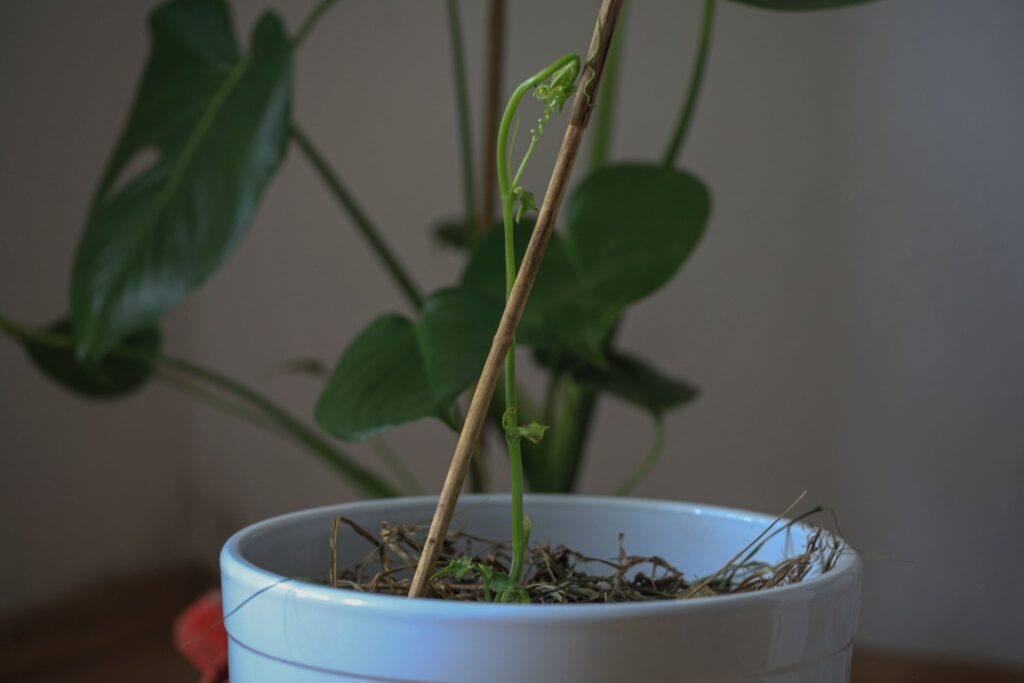Do you know about the chayote? This is a pear-shaped and light-green fruit, which is known as the vegetable pear in the US, and chayote in Mexico. These grow on vigorous and cold-sensitive vines, coming from the cucurbit family, which is the plant family including cucumbers, melons, pumpkins, and squash.
This warm-season and tender perennial can be grown from a container and its vegetables are delicious! So, if you’re wondering how to grow chayote in container to start your gardening, read on.

How to Grow Chayote in Container
Chayote vines require a 120 to 150 day growing season between the hard frosts, which is a circumstance that’s a bit difficult to come by in the United States unless you’re from the south. The frost won’t destroy the roots, but it does require proper care. Established chayote plants will resprout in spring, producing large quantities of fruit.
To ensure healthy growth if you’re planting it in a container, follow these steps:
Step 1
Instead of planting the chayote plant using seeds, you purchase fresh chayote fruits. It’s best to buy them during the fall season, even if they were in cold storage and/or wrapped in plastic. Unwrap the chayote once you’re home, then store them in a cool and dark place, like the garage or cupboard.
The seeds in the fruits will sprout and emerge, lengthening when in the dark. Come February, the seedlings should be 6 inches long.
Step 2
Start by planting the chayote fruit in a 5-gallon and 24-inch-deep container with a moist soil mixture, containing equal parts peat moss, perlite, and vermiculite. You can also use moistened potting soil.
Scoop out soil in the center to make room for the chayote. The fruit should be buried about 4-6 inches deep, and the tip barely showing, slanted with its sprouted end down and its stem end leveled with your soil. Place one plant per container to prevent it from overcrowding until such time you transplant it outdoors.
Do NOT grow chayote with celery, mint leaves, or snap beans. They do grow well with corn, peppers, pumpkin, and squash plants.
Step 3
Put the chayote container in a location with full sunlight, and if placed indoors, it should be an area that’s within 2 feet of a window that faces west or south, receiving a lot of sun. Place it in a light or white room if it’s possible, as this would reflect sunlight. Chayote plants require full sun to produce the best fruit, and you can monitor if your plants get enough sun by observing its growth, with pale green or spindly foliage meaning not enough sunlight and scorched or burned leaves meaning too much of it.
I recommend that you place the container outdoors during warmer temperatures, maybe adjacent to a fence or trellis for support (I’ll get into this in the next steps).
Step 4
Water your chayote plants whenever its soil feels dry. You can use your fingers to feel the soil, and if it doesn’t feel moist, water it. Chayote plants require regular watering, never allow their soil to dry out.
It’s best to water them once or twice a day during the hot weather, as roots would be limited to moisture that’s available to them when planting it in the container.
They also require humidity, as they are tropical plants. To do so, place the container on a bed with damp marbles. Also, feed the plant with liquid fertilizer or compost teas every 2 weeks. It’s also best to side-dress it every 4-6 weeks during the growing season and aged compost during the midseason.
Fortunately, chayote plants don’t have serious disease problems, but aphids may attach to the vines. If you do see them, handpick or hose aphids off with strong blasts of water and maybe add pesticide, if necessary. Be wary of using too much pesticide and follow the directions from the product.

Step 5
Once the chayote plant is growing even taller, invest, and install a trellis in the container. This is a climbing plant, so make sure you add proper support so it grows well and can produce fruit properly.
Come winter season, protect the chayote plants with thick mulch that’s about 10-15 inches thick before the first frost. Again, the vines would die back from the first frost, though its fruits won’t be damaged until a first hard frost. Store the container in the cool basement or garage until spring arrives, watering it lightly once a month or so.
Mulch the chayote plant’s soil using several inches of mulch, which can conserve the moisture. Be sure that you tend to the chayote’s vines all summer long, especially as it grows and when the weather is hot. The vines will grow to about 30 feet or more before it blossoms and set fruit.
The vines will bloom from August to September covered with chayote fruits from September to October.
Step 6
You will know when chayote is ready to harvest once the fruits are tender and around 4-6 inches in diameter. Cut the chayote from the vine using a knife or hand-pruner. Make sure you do this before the flesh hardens, or it affects the taste and texture when consuming it.
Repeat the process yearly for your plants to continue bearing healthy fruit!
Do you want to learn more about growing chayote from containers? Check out this interesting video:
Wrapping It Up
If you’re planning to plant chayote, the process is fairly easy, and you can start it off in a container. Just make sure that you provide the right space, nourishment, among other necessary nutrients and necessities, so it can grow and stay healthy. That way, you have fruit to harvest and cook for your next meals!
I hope that this article on how to grow chayote in container helped you out! So, don’t wait any longer and start gathering the right materials and materials to begin planting a chayote plant for yummy vegetables.